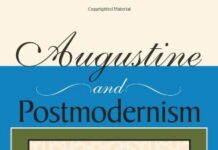
Ebook Info
- Published: 2008
- Number of pages: 144 pages
- Format: PDF
- File Size: 8.38 MB
- Authors: John D. Caputo
Description
Intent upon letting the reader experience the pleasure and intellectual stimulation in reading classic authors, the How to Read series will facilitate and enrich your understanding of texts vital to the canon. Soren Kierkegaard is one of the prophets of the contemporary age, a man whose acute observations on modern European life might have been written yesterday, whose work anticipated fundamental developments in psychoanalysis, philosophy, theology, and the critique of mass culture by more than a century. John D. Caputo offers a compelling account of Kierkegaard as a thinker of particular relevance in our postmodern times, who set off a revolution that counts Martin Heidegger and Jacques Derrida among its heirs. His conceptions of truth as a self-transforming “deed” and his haunting account of the “single individual” seem to have been written especially with us in mind. Extracts include Kierkegaard’s classic reading of the story of Abraham and Isaac, the revolutionary theory that truth is subjectivity, and his groundbreaking analysis of modern bourgeois life.
User’s Reviews
Editorial Reviews: About the Author John D. Caputo is the Thomas J. Watson Professor of Religion and Humanities at Syracuse University and a specialist in the interface between postmodern thought and contemporary religion. His latest books are The Weakness of God: A Theology of the Event and After the Death of God, coauthored with Gianni Vattimo. He is also the author of On Religion.Simon Critchley is a best-selling author and the Hans Jonas Professor of Philosophy at the New School for Social Research. His many books include The Book of Dead Philosophers, Bowie, and Tragedy, the Greeks, and Us.
Reviews from Amazon users which were colected at the time this book was published on the website:
⭐I read this even though I had already read four separate works by Kierkegaard. The man seemed to be full of contradictions and also, what was the deal with the fact that of these four books, none of them were attributed to Kierkegaard himself? I needed help making sense of what I had already read and having an idea of what to expect if I decided to read more.This book ably introduces the reader to not only Kierkegaard’s main concepts, but also intersperses his interpretation of this concepts with biographical details as well that make it easier to understand just why Kierkegaard came to write what he did. What sets this book apart, though, is how Caputo is able to point out the differences between Kierkegaard’s earlier and later work as well as offer thoughtful critiques of various aspects of Kierkegaard’s views. Despite the fact that Caputo claims to be a champion of Kierkegaard, this book is not 120 pages of thoughtless praise. Caputo also, at multiple points, shows how Kierkegaard’s thought relates to Nietzsche’s and also influenced later philosophers such as Camus, Sartre, and Heidegger, among others. It is difficult for me to imagine a much better introduction to Kierkegaard for the general reader than this little book.
⭐Jack is a wonderfully compelling author. His delight for the subject matter is obvious. He has the great talent of taking challenging marerial and oresenting it in a straightforward manner for the non-professional, yet still includes enough reference to later thought to paint complete picture of the staggering reach of this unique thinker. His unerstandong of Soren the person also helped flesh out a more complete versionof his works and legacy.
⭐Caputo is terrific. I’ve learned from and enjoyed everything I’ve read from him. This little book on Kierkegaard is no exception. He provides an entry point to the difficult Dane for us common folk, and he does it with both brevity and style. A real delight to read!
⭐Great, short introduction. I particularly appreciated, and followed, the recommendations for further reading
⭐excellent copy
⭐Like all of the how to read books it is a great guide to kierkegaard and his wrightings.
⭐I read this quite a while ago, and it is still a book I recommend to my friends. This is the only book in Simon Critchley’s “How to Read” series, but, on the basis of this book and its series introduction, I think the goal of the series is fantastic. To be clear, by “how to read,” the intention is not to tell the reader how to interpret the author and his texts. Instead, the series is intended to develop a contextual understanding of the author’s works, contextualize it historically (supplying relevant social influences, etc), and sewing it into the author’s biography (so that the intentions behind the works is understood). In particular with Kierkegaard, there is quite a bit Kierkegaard in his philosophy, and I might even go so far to say that he was his philosophy; so understanding the reason for the pseudonyms, for example, require understanding a little about Kierkegaard as a person and his motivations. Critchley points out that one of the intentions of the series is, not to give some basic information about the texts (a rushed summary) or a canned biography, but to supply pieces of text that are stitched together with insights, biography, historical context. I think this is probably the best part of “How to Read Kierkegaard”: the excerpts are so wonderfully chosen, and the commentary and insight so good, that I felt like the 100-page text was as saturated as a 250-page text, yet wholly accessible to the newcomer. My personal favorite aspect of this work is that the really obscure texts (there are a lot with Kierkegaard, because he wrote voluminously) and helps the reader understand the major works in light of them, where it is valuable to do so. Caputo really does a great job of referring to, for example, Kierkegaard’s thesis on Socratic irony, for example. I have spoken with a number of younger readers (not all philosophy majors), who are apprehensive about looking into Kierkegaard because of the religious nature of his writings, and I think this is the PERFECT text to see whether one should choose to read Kierkegaard. For those interested in Nietzsche, I say reading Kierkegaard is a must, so I recommend reading the Kierkegaard selections from Nathan Oaklander’s “Existentialist Philosophy: An Introduction,” at the bare minimum. Still this book is recommendable to those Nietzshce fans, as well as anyone with a little extra time who has already read some Kierkegaard; but I especially recommend it to those who maybe either want a tiny taste of Kierkegaard, at a low time-cost, and those who want to test the waters. This book is also great for figuring out where to start with Kierkegaard’s texts, if you have already decided to read him, but don’t know where to begin.
⭐Perfect!
⭐Bought this more for a taste of Caputo than to lear about Kierkegaard. I have been a fan of the great Dane for some years, now. Anyway, I found Caputo’s writing crisp, mostly economical and mostly pretty transparent. Nice. Better, I did learn something about ‘reading Kiekegaard’. I would love to talk to Caputo about his (mis)reading of the Abraham and Isaac routine which seems to me to be flagrantly question begging, but even that warned a winter evening.
⭐Excellent and concise introduction to such a vast body of work such as Kierkegaard. Well organized around different terms and concepts relevant to K’s writing while never losing touch with the original text.
⭐Very good introduction to one of histories most important and original thinkers.
Keywords
Free Download How to Read Kierkegaard in PDF format
How to Read Kierkegaard PDF Free Download
Download How to Read Kierkegaard 2008 PDF Free
How to Read Kierkegaard 2008 PDF Free Download
Download How to Read Kierkegaard PDF
Free Download Ebook How to Read Kierkegaard





